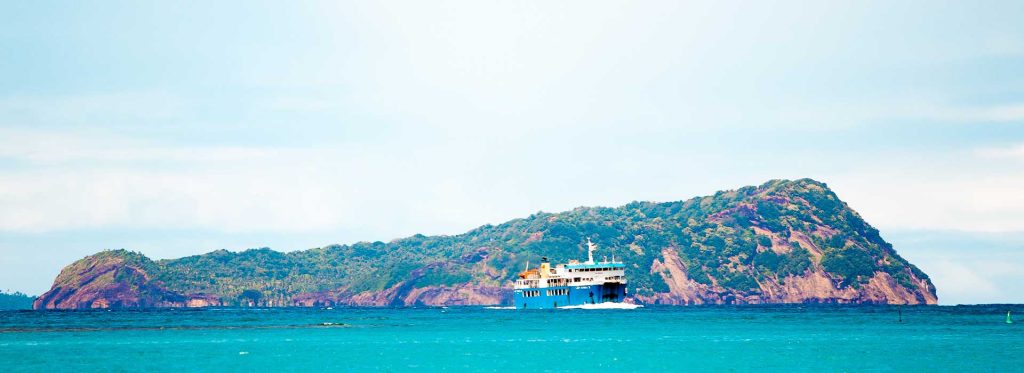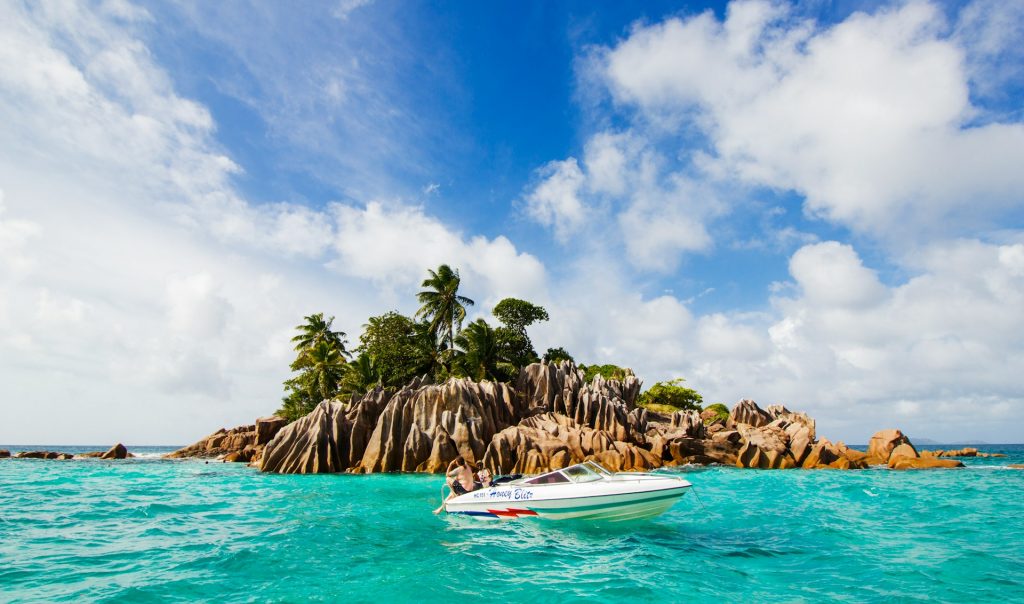The 4 Citizenship by Investment Programs We Never Talk About (And Why We Don’t)
By IMI’s definition of “citizenship by investment program” (CIPs) – structured policies that offer citizenship directly in exchange for standardized and uniform investments or donations of explicitly prescribed sums – the world has 16 CIPs*.
Most clients have heard about eight or nine, but even most investment migration professionals would be hard-pressed to name more than a dozen, namely the CIPs of:
- The Caribbean Five (and possibly El Salvador’s new program)
- Turkey
- Vanuatu
- Malta
- Jordan
- Cambodia
- Egypt
But the world has another four CIPs to which the market practically never devotes any attention – for good reasons, as we shall see.
Today, we’ll provide a cursory overview of each of these four obscure CIPs while aiming to answer the following questions:
- What are the program’s requirements?
- Why is there no demand for the program?
- Which improvements could make the program attractive?
1. Citizenship by Investment in Bangladesh

According to a report on Bangladeshi citizenship from the Robert Schuman Centre for Advanced Studies at the European University Institute, the laws governing citizenship in Bangladesh are both “superfluous and contradictory.” This is also the case for the investment-based citizenship category.
What are the requirements?
Bangladeshi nationality law does not specify detailed requirements for the country’s CIP. Instead, they are subject to rules defined in the government’s industrial investment policy. The precise investment amounts required to qualify for citizenship are also not clear and vary by source:
According to the Central Bank of Bangladesh, foreign nationals can qualify for citizenship “by investing a minimum of US$500,000 or by transferring US$1 million to any recognized financial institution.” The US State Department, meanwhile, indicates US$1-2 million is the requisite amount and that the sum should be transferred to a bank.
The European University Institute’s report states that “any person who invests an amount of US$5 million or its equivalent in an industrial or commercial project of Bangladesh or transfers US$1 million to any of the recognized financial institutions in Bangladesh may be granted citizenship through naturalization. These investments are non-repatriable and hence may not be withdrawn.”
Why is there no demand for the program?
One immediately salient shortcoming of the Bangladeshi CIP is the mentioned ambiguity around the size and nature of the prescribed investment: Must the investment take the form of a bank deposit or an industrial project, and is the minimum US$500,000 or US$1 million?
The answers are not readily attainable, and, in any case, the indicated amounts are far higher than what a citizenship of Bangladesh’s caliber could reasonably command.
On most metrics by which CBI countries like to compare themselves – such as visa-free travel, human development, or standard of living – Bangladesh scores dismally. The country’s passport affords visa-free or visa-on-arrival access to a mere 42 countries, most of them in Africa. On Henley & Partners’ Passport Index, Bangladesh ranks near the bottom, behind Eritrea and Sudan in a shared 102nd place with North Korea. The Bangladeshi travel document is unquestionably one of the world’s feeblest.
Moreover, Bangladesh does not permit dual citizenship except under very limited circumstances.
Which improvements could make the program attractive?
Rare is the person for whom Bangladeshi citizenship would represent an upgrade from what they already have. Few citizenships are less desirable.
But even a Bangladeshi citizenship is preferable to no citizenship at all, which means it could conceivably target the world’s 15 million stateless individuals. Consider that more than a million Rohingya Muslims, most of whom are stateless, fled to precisely Bangladesh from neighboring Myanmar following the genocide in 2017.
But even in that unenviable market, Bangladesh would not be without competitors since Vanuatu – which has a far superior nationality – is also open to applicants without citizenship. To compete, Bangladesh would need to cater not merely to the stateless but to the non-HNWI stateless by offering an investment threshold considerably below Vanuatu.
Unless Bangladesh is prepared to offer citizenship for less than $50,000, this program will continue to languish.
2. Citizenship by Investment in Pakistan

Pakistan is home to the world’s cheapest citizenship by investment program, but it’s only open to a third of the world’s population.
What are the requirements?
Compared to its subcontinental neighbor to the east, Pakistan’s citizenship by investment terms are relatively clear and straightforward: Section 20 of the Pakistani Citizenship Act allows the government to grant immediate citizenship by registration to Commonwealth citizens – of which there are some 2.7 billion – at terms it can set at its discretion.
At present, those terms, as set by the Directorate General of Immigration and Passports, require that applicants deposit the equivalent of PKR 5 million (about US$18,000) in foreign currency with the State Bank of Pakistan.
Once the deposit is confirmed, the applicant will receive an immigration visa for Pakistan. Upon arrival in the country, the applicant will receive his or her newly minted Pakistani passport.
Why is there no demand for the program?
The chief reason Pakistan’s citizenship by investment program garners little interest is the low quality of its citizenship. With visa-free or visa-on-arrival access to only 34 countries, Pakistan’s passport is even weaker than that of Bangladesh. In fact, only three countries have a lower mobility score than Pakistan.
Which improvements could make the program attractive?
In a word: Marketing.
While an impotent travel document, Pakistan’s passport, unlike that of Bangladesh, is at least cheap enough to make passport aficionados and hobbyists ask themselves “why not?” After all, a second citizenship is a second citizenship.
This is precisely what happened when we first began discussing this program on social media, where at least one Canadian expressed an interest in adding it to his passport portfolio. At an attainable US$18,000, a Pakistani passport could become – among a certain set of particularly interested enthusiasts – a curio, an objet d’art, or a collector’s item.
A well-devised advertisement campaign along those lines could well sow some modest demand for this program.
Considering how sentimental most people are about their citizenships, however, Pakistani officials would likely find such a campaign to be of poor taste.
3. Citizenship by Investment in Samoa

Sporting 133 visa-free destinations – including all Schengen countries, the UK, Canada, and Russia, Samoa’s citizenship is of high quality. But the relatively high investment threshold and lengthy residency period make its CIP uncompetitive for now.
What are the requirements?
Samoa ordinarily offers the possibility to apply for naturalization after five years of residency. A special provision in its nationality law, however, reduces this period to three years for individuals who can demonstrate a net worth of 2.5 million tālā (about US$900,000) and make an investment of at least 4 million tālā (about US$1.45 million).
Even after citizenship is granted, the individual must also spend at least 15 days a year in the country, though this provision may not always be enforcible, especially if the applicant has given up his other citizenships.
Why is there no demand for the program?
Simply put, the price is too high, and the residency period is too long. Citizenships of equal or higher quality are available for a smaller investment and without any residence period elsewhere, notably in the Caribbean and Vanuatu (but even Malta’s MEIN is cheaper).
Which improvements could make the program attractive?
To make a place for itself in the CBI sector, Samoa would need to concede that the market value of its citizenship is roughly on par with those of the Caribbean, Vanuatu, and perhaps Turkey. To compete, it would have to lower its asking price by more or less one order of magnitude and do away with its three-year residence requirement.
4. Citizenship by Investment in the Seychelles

Like Samoa, the Seychelles offers a citizenship by investment program that fails to take its competitive position into account.
What are the requirements?
Under ordinary circumstances, an individual can apply for naturalization in the Seychelles after 15 years of residency. Those who invest US$1 million in a Seychellois business, however, see this residency period reduced to 11 years; hardly an upgrade.
Why is there no demand for the program?
While the Seychellois passport is the strongest travel document discussed in this article – 156 visa-free destinations, including the Schengen countries, the UK, China, Russia, Turkey, South Korea, and New Zealand – both the extremely long residency period and the unrealistic price point make this program an unattractive proposition to all but those with a particular affinity for the Seychelles who would have invested there independent of the existence of a program.
Which improvements could make the program attractive?
As with Samoa, the Seychelles must take realistic stock of the value of its citizenship and adjust its asking terms accordingly. This is a Tier-2 citizenship priced as though it were on the top shelf.
A more sober investment requirement would be in the $100-200,000 range, but even bringing it down to this level would do little to generate demand as long as there’s a residency period.
Honorable mention: Citizenship by Investment in Cabo Verde
Cabo Verde offers citizenship without a residency period in exchange for a “substantial” investment. Unofficial reports indicate an investment of around US$200,000 is considered sufficiently substantial, though there is no formal government policy stating this.
As such, Cabo Verde’s path to citizenship through investment, while viable, is not a CIP in the strict sense.
Explore the IMI Citizenship Catalog to sort and search through 843 different ways to get citizenship in all the world’s 195 countries.
Christian Henrik Nesheim is the founder and editor of Investment Migration Insider, the #1 magazine – online or offline – for residency and citizenship by investment. He is an internationally recognized expert, speaker, documentary producer, and writer on the subject of investment migration, whose work is cited in the Economist, Bloomberg, Fortune, Forbes, Newsweek, and Business Insider. Norwegian by birth, Christian has spent the last 16 years in the United States, China, Spain, and Portugal.



